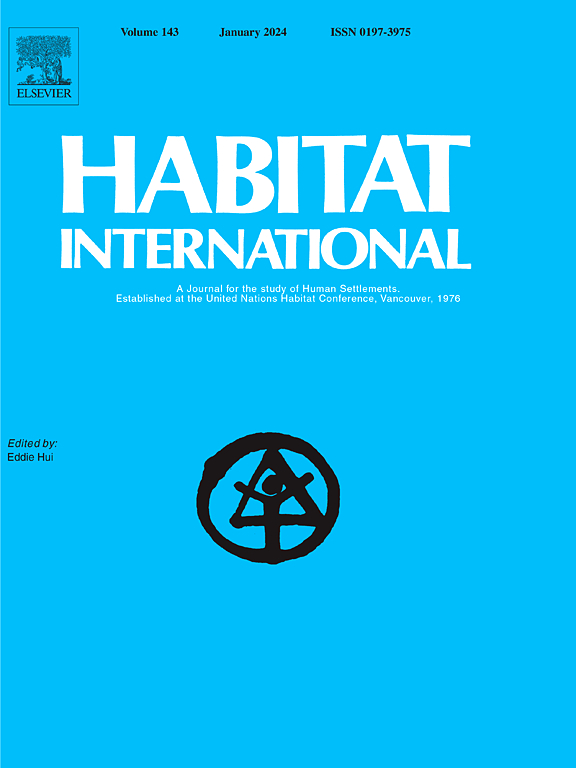The impact of anti-fragility on agricultural production under extreme precipitation in China
IF 6.5
1区 经济学
Q1 DEVELOPMENT STUDIES
引用次数: 0
Abstract
Frequent extreme precipitation poses significant challenges to rural systems, underscoring the pivotal role of bolstering resilience against such weather extremes for the sustenance of rural sustainability. Although existing research has analysed the adverse effects of extreme precipitation on rural vulnerability, there remains a dearth of exploration into the potential benefits that rural areas might reap from such events. Drawing on Taleb's theory of anti-fragility, this study constructs a comprehensive measurement index system for the Rural Anti-Fragility Index (RAFI) from three dimensions: exposure, sensitivity, and adaptation. In this work the spatiotemporal dynamics of rural anti-fragility in Chinese county-level rural areas and their impact on agricultural production were analysed. The results indicate that (1) Spanning 2000 to 2018, China's RAFI level continuously increased, with an overall level in the median range, the highest in the Rural Sensitivity Index (RSI), followed by the Rural Exposure Index (REI), and the lowest in the Rural Adaptation Index (RAI). (2) The RAFI exhibited significant spatial clustering characteristics, with high values in the southeast and low values in the northwest. Hotspots of Rural Anti-Fragility (RAF) are mainly concentrated in the Middlelower Yangtze Plain (MYP) and Southern China (SC), while cold spots are distributed in the transitional zones of the central and western regions, as well as Tibet, Xinjiang, and other areas, with the regions of cold and hot spots becoming increasingly significant and expanding continuously. (3) The presence of RAF positively and substantially influences agricultural output in terms of both area and yield, with the greatest effect on wheat, followed by rice and spring maize. The different levels of anti-fragility exhibited strong heterogeneity in their impacts on the production areas of the three crops. We advocate for deliberate and proactive measures to augment RAFI, paramount for the realization of enduring goals in rural sustainability and agricultural progression.
中国极端降水条件下反脆弱性对农业生产的影响
频繁的极端降水给农村系统带来了重大挑战,凸显了加强抵御此类极端天气的能力对维持农村可持续性的关键作用。尽管现有的研究已经分析了极端降水对农村脆弱性的不利影响,但对农村地区可能从此类事件中获得的潜在利益的探索仍然不足。本文借鉴Taleb的反脆弱性理论,从暴露、敏感性和适应三个维度构建了农村反脆弱性指数(RAFI)的综合测度指标体系。本文分析了中国县域农村反脆弱性的时空动态及其对农业生产的影响。结果表明:(1)2000 - 2018年,中国RAFI水平持续上升,总体水平处于中位数范围,农村敏感指数(RSI)最高,农村暴露指数(REI)次之,农村适应指数(RAI)最低。(2) RAFI呈显著的空间集聚特征,呈东南高、西北低的格局。农村反脆弱性热点地区主要集中在长江中下游平原和华南地区,寒区分布在中西部过渡地带以及西藏、新疆等地区,寒区和热点地区日益显著并不断扩大。(3) RAF的存在对农业产量在面积和产量方面都有积极和实质性的影响,对小麦的影响最大,其次是水稻和春玉米。不同程度的抗脆弱性对三种作物产区的影响表现出较强的异质性。我们主张采取深思熟虑和积极主动的措施,加强农业综合投资,这对实现农村可持续发展和农业发展的长期目标至关重要。
本文章由计算机程序翻译,如有差异,请以英文原文为准。
求助全文
约1分钟内获得全文
求助全文
来源期刊

Habitat International
Multiple-
CiteScore
10.50
自引率
10.30%
发文量
151
审稿时长
38 days
期刊介绍:
Habitat International is dedicated to the study of urban and rural human settlements: their planning, design, production and management. Its main focus is on urbanisation in its broadest sense in the developing world. However, increasingly the interrelationships and linkages between cities and towns in the developing and developed worlds are becoming apparent and solutions to the problems that result are urgently required. The economic, social, technological and political systems of the world are intertwined and changes in one region almost always affect other regions.
 求助内容:
求助内容: 应助结果提醒方式:
应助结果提醒方式:


